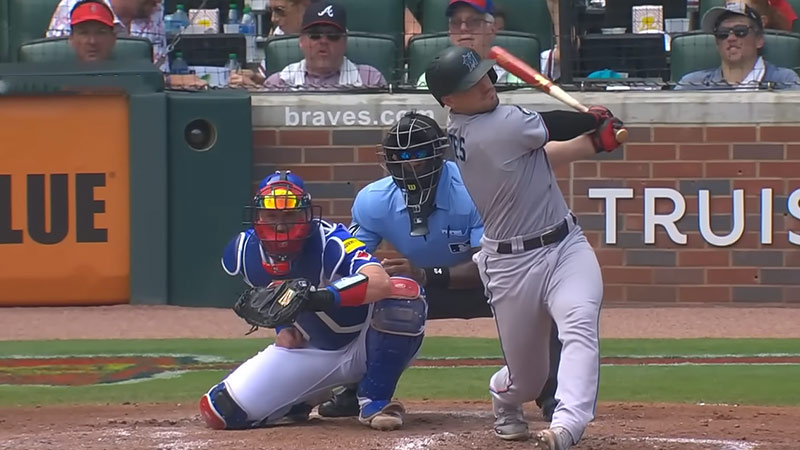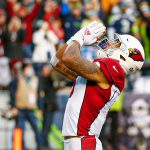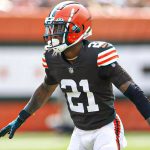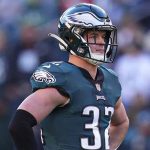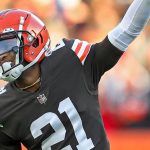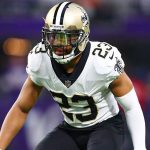You must have heard of a designated hitter in the course of play in baseball. Designated hitters (DH) play an important role in the formation of the game. They can lead your team to victory without being defensive at all.
So, what makes designated hitters different from others? And, are there Baseball Designated Hitter Rules for this category of players? Wait! Wait.
We are here to answer all your questions. In the following, we will learn more about baseball Designated hitters, their roles, and MLB Designated Hitter Rules.
Who Are Designated Hitters (DH)?
In baseball, designated hitters bat in place of any other position players, particularly the pitcher. Thinking about why would a designated hitter replace a pitcher. Explanation below:
When a player bats in a match for someone who is playing defensively, he will be removed from the game entirely. The defensive player here is the pitcher.
In scenarios like this, the designated hitter takes the pitcher’s place. However, the pitcher stays in the game without having to bat. Designated hitters improve team flexibility; in the meantime, ensuring players can get rest as they need to.
The position of designated hitters is authorized under rule 5.11 of Major League Baseball. The first adoption was by American League in 1973 while the National League adopted this role in 2022. Later, it became universal in MLB.
The MLB Rule 5.11 states that,
“A hitter may be designated to bat for the starting pitcher and all subsequent pitchers in any game without otherwise affecting the status of the pitcher(s) in the game. A Designated Hitter for the pitcher, if any, must be selected prior to the game and must be included in the lineup cards presented to the Umpire-in-Chief. If a manager lists 10 players in his team’s lineup card but fails to indicate one as the Designated Hitter, and an umpire or either manager (or designee of either manager who presents his team’s lineup card) notices the error before the umpire-in-chief calls “Play” to start the game, the umpire-in-chief shall direct the manager who had made the omission to designate which of the nine players, other than the pitcher, will be the Designated Hitter.”
Comment on Rule 5.11 is stated below:
“A correction of a failure to indicate a Designated Hitter when 10 players are listed in a batting order is an “obvious” error that may be corrected before a game starts.”
Key Points:
Here are a few key points on designated hitters:
- The designated hitter removes the pitcher who has been in the offensive lineup.
- The designated hitter has to be chosen before the match starts. It will be queued in the lineup card.
- The role of a designated hitter is optional. While most baseball leagues in North America adopted this role, it is entirely optional for other leagues.
- Even if the manager missed to appoint in the lineup card, and the umpire-in-chief detects the flaw, he will inform the manager to assign any of the ten players (except the pitcher) to play the role of the designated hitter.
- Rule 5.11 (a)(4) says that a pinch hitter in the place of a designated hitter may be used in terms of circumstances.
- Designated hitters should enter the game at least once. However, they can’t reenter the game.
- A player who is serving as DH can later be used on defense. But he will continue to bat in the same lineup.
Baseball Designated Hitter Rules – Highlights
We came to know who designated hitters are and MLB appointed a set of guidelines for this role. Here, we will take a detailed look at the highlights of the MLB Designated Hitter Rules.
Role of the Designated Hitter (DH)
Players who lack defensive skills and offer better hitting abilities are suitable for this role. They are typically strong hitters and specialize in offense, allowing others to maximize their scoring potential.
Designated hitters replace the pitchers in the batting order. However, a starting pitcher can also play as a designated hitter. Just make sure the pitcher is not a relief pitcher. MLB has clarified the role and responsibility of a designated hitter in Rule 5.11(a)(5) saying,
“The Designated Hitter may be used on defense, continuing to bat in the same position in the batting order, but the pitcher must then bat in the place of the substituted defensive player, unless more than one substitution is made, and the manager then must designate their spots in the batting order.”
With the MLB DH rule, your baseball team can have the comparatively less efficient hitters take a step back from the lineup. And replace them with more powerful offensive hitters. However, in special scenarios, the designated hitter can be used in defense according to Rule 5.11(a)(5)
Substituting Designated Hitters
When designated players are assigned to the role, they remain in that role until they are substituted for by a defensive player. The substitution takes place following MLB Rules 5.11(a)(6) and 5.11(a)(7).
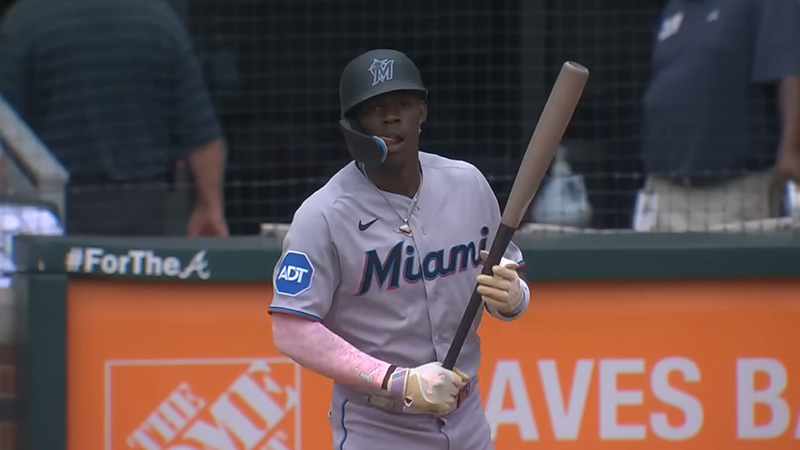
These two rules state that,
“A runner may be substituted for the Designated Hitter and the runner assumes the role of Designated Hitter. A Designated Hitter may not pinch-run.” – Rule 5.11(a)(6)
“A Designated Hitter is “locked” into the batting order. No multiple substitutions may be made that will alter the batting rotation of the Designated Hitter.” – Rule 5.11(a)(7)
Designated hitters are locked in their position unless it is a crucial need to substitute them. In scenarios like this, a designated hitter will be replaced following the MLB Rule 5.11(a)(6). The team can decide to remove the designated hitter and have the pitcher bat.
However, multiple substitutions will not take place and one DH will only play once in the field.
Team Without A Designated Hitter
During the inter-league competition, your team can have a designated hitter while the opposing team can miss one. How to pursue the match in such a case? MLB has set clear guidelines for scenarios like this. The match will be carried out following Rules 5.11(b)(1) and 5.11(b)(2). The rules state that,
“In World Series or exhibition games, the rule will be used or not used as is the practice of the league of the home team.” – Rule 5.11(b)(1)
“In All-Star games, the rule will only be used if both teams and both Leagues so agree.” – Rule 5.11(b)(2)
Both teams can pursue the match if they mutually don’t face any issues carrying on the match. In the case of the World Series or other exhibition games (unofficial games), the home team gets the advantage. Rules can be either applied or not based on the practice of the home team.
Termination of the Designated Hitter
Your team can decide to use the designated hitter to play in defense. He will continue to bat in the same batting order. According to MLB Rule 5.11(a)(5), when a designated hitter plays in defense, the pitcher must bat instead of the substituted defensive player.
According to Rule 5.11(a)(5),
“The Designated Hitter may be used on defense, continuing to bat in the same position in the batting order, but the pitcher must then bat in the place of the substituted defensive player, unless more than one substitution is made, and the manager then must designate their spots in the batting order.”
However, when the designated hitter is appointed to a position of defense, MLB has decided to terminate the role of the designated hitter for the remaining time of the game. This is what Rule 5.11(a)(8) states,
“Once the game pitcher is switched from the mound to a position on defense, such move shall terminate the Designated Hitter role for that Club for the remainder of the game.”
Here are a few important highlights from baseball designated hitter rules. MLB is strict about following specific rules about designated hitters. You will find more laws for baseball-designated hitters under MLB Rule 5.11(a) (1-15) and Rule 5.11(b)(1) & (2).
This was about DH rules and regulations. But have you thought about how designated hitters influence your favorite baseball match? Check out the section below.
Why Do We Need A Designated Hitter in Baseball?
One of the primary reasons to have a designated hitter on your team is to increase offense. In baseball, pitchers are traditionally praised for their powerful and tactical pitching capability. However, they often struggle at the plate.
By introducing a designated hitter, you have a specialized player in the lineup who can potentially improve the overall offensive output. This addition can lead to more runs, hits, and home runs, thereby enhancing the entertainment value for fans.
Plus, you can develop a more balanced lineup with an expert hitter without compromising defensive capabilities. Pitchers, who typically have limited batting skills, can focus on their primary role of pitching effectively while leaving the hitting duties to designated hitters. This strategy helps teams optimize their lineups.
Moreover, designated hitters have proven to be more successful to engage more audiences continuously; potentially drawing more attention and contributing to thrilling comebacks.
On the other hand, without designated hitters, you might put your pitchers at further risk of injury. We don’t want to repeat another Max Scherzer or Jacon deGrom incident in the field who went down while making it to their first base.
You can recall Edgar Martinez, the popular designated hitter of all time. He started his career as a third baseman earlier. Later, he became a designated hitter and there was no going back. In his career, he had 243 home runs in 6,218 plate appearances. The most successful season in his career as a DH was 1995.
Pinch Hitter and Designated Hitter: What’s the Difference?
You might have heard the term pinch hitter in baseball. In fact, we have used the term in this article once. There is a thin line between a pinch hitter and a designated hitter. They are different in roles and descriptions. Keep reading to know more.
A designated Hitter is a substitute hitter for the pitcher. His role is completely defined to back up the pitcher in the offense. He is capable to bat for the pitcher while the pitcher is still in the game. Meanwhile, a pinch hitter in baseball can replace any player as a hitter.
The pinch hitter stays in the lineup and the player he batted for will be removed from the match, unlike the pitcher with the designated hitter.
Which Leagues Allow Designated Hitters?
The American League was the only league in MLB that adopted the designated hitters in 1973. All this time, they were the sole users of designated hitters until recently in 2020, The National League welcomed the designated hitters and fully shipped with MLB Rule 5.11 at the beginning of 2022.
Why didn’t the National League didn’t allow designated hitters all this time? Well, the decision was solely made by MLB itself. MLB suggested keeping these two leagues separate with policies. With the American League adopting the new changes at once, the other half of the National League remained authentic with the older version of MLB rules until 2020.
You can consider this an experiment!
Need More on Baseball?
For many, when designated hitters enter the match, it ignites a spark of excitement for them. Designated hitters add a booster dose to the pitchers’ capability while keeping them safe. They also add balance between offense and defense between two teams; maintaining a harmony of power.
From our perspective, we believe designated hitters add promises to the field. However, many critics argue that they compromise the strategic nature of the game while preventing pitchers to develop new skills.
Good or bad! Let it be! New additions are always essential in the game to improve the quality and engage more traffic. Thus, let’s appreciate the designated hitters when they enter the field and ensure MLB baseball designated hitter rules are properly followed.
To get regular updates on America’s favorite pastime, keep an eye on our blogs.

